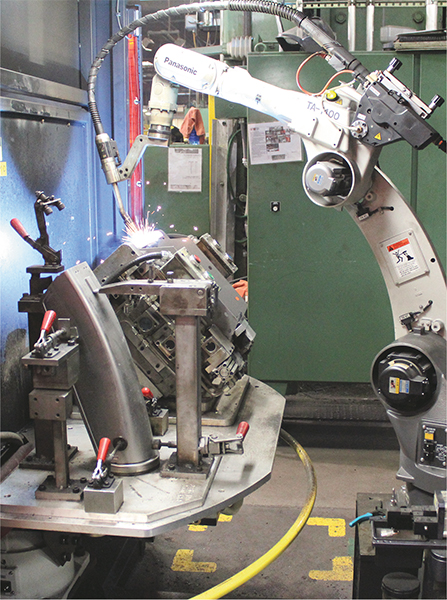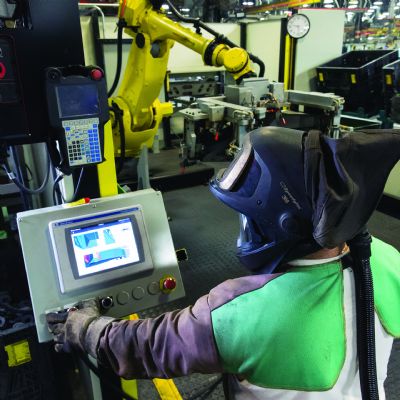Using a heavy-duty contact tip, such as a chrome-zirconium, helps ensure top performance from metal-cored wire. These tips better withstand the high volume of wire passing through for longer periods of time than standard-duty contact tips. That means less downtime for changeovers, which helps support the greater productivity sought with metal-cored wire when paired with a robot.
Greater Efficiency in Pre- and Post-Weld Areas
In robotic-welding operations—regardless of the industry—many activities occur in the pre- and post-weld areas. These range from pre-cleaning of the base material and applying antispatter before welding to removing spatter and powder-coating parts after. In many cases, metal-cored wire can eliminate some of these steps.
Activities such as tacking parts or loading fixtures, of course, are simply non-negotiable in the pre-weld area. To obtain the best quality, these must be addressed appropriately. Because metal-cored wire has added deoxidizers, alloys and arc stabilizers, however, it generates very little to no spatter and can weld through some contaminants. These advantages reduce the time and cost for antispatter application, as well as the time needed to clean spatter from fixtures, flooring and the robot. It also minimizes the amount of post-weld grinding and sandblasting.
By removing such pre-weld activities, companies operating robotic-welding systems can then reduce the associated time, labor and costs in this area of the welding operation and send parts straight to the weld cell.In the post-weld area of a robotic-welding operation, metal-cored wire offers some of its best advantages—namely, it can reduce cleanup and rework. Because metal-cored wire offers good gap bridging and a smooth weld bead, and reduces instances of burnthrough, weld quality typically is quite high when coming out of the robotic-welding cell, with less need for rework.
By eliminating these activities, companies can increase the flow of completed parts to other stages of production, such as painting or coating, to improve overall productivity. Also possible: lower labor costs and faster return on investment by reallocating labor elsewhere in the welding operation to gain even higher productivity levels.
Because the goal of any robotic-welding operation is to have high arc-on time and high quality to drive productivity, it is important to look at all facets of the application—the weld wire included. MFView Glossary of Metalforming Terms
See also: Hobart Brothers Co.
Technologies: Pressroom Automation, Welding and Joining








